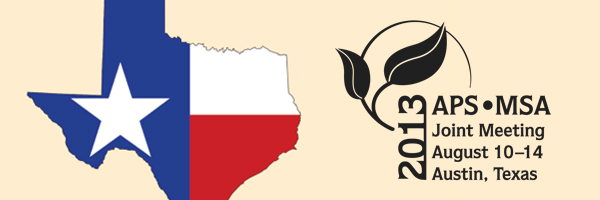APS Homepage
Back

Special Session: Status and Challenges in Identification and Diagnosis of Graminicolous Downy Mildews
© 2013 by The American
Phytopathological Society. All rights reserved.
47-S
Status, challenges and tools for identification and diagnosis of Peronosclerospora and Sclerophthora of regulatory concern for graminicolous crops.
Z. G. ABAD (1), J. Bienapfl (1), D. G. Luster (2), M. Carter (2), M. Thines (3), S. Telle (4), M. J. J. Riley (5), A. Levesque (6), R. G. Shivas (5), F. M. Dela Cueva (7), J. A. Crouch (8), M. K. Nakhla (1)
(1) USDA-APHIS-PPQ-CPHST Beltsville Laboratory, Beltsville, MD, U.S.A.; (2) USDA-ARS, Fort Detrick, Frederick, MD, U.S.A.; (3) Dept. Biol. Sci., Inst. Ecol. Evol. and Div., J. W. Goethe University, Frankfurt, Germany; (4) Frankfurt, Germany; (5) Plant Pathology Herbarium, Agri-Science Queensland, Queensland, Australia; (6) Agriculture and Agri-Food Canada, Ottawa, ON, Canada; (7) The University of Philippines, Laguna, Philippines; (8) Systematic Mycology & Microbiology Laboratories, USDA-ARS, Beltsville, MD, U.S.A.
Graminicolous Downy Mildew (GDM) diseases caused by the genera Peronosclerospora (13 spp.) and Sclerophthora (6 spp. and 1 variety) are poorly studied but destructive diseases of major crops such as corn, sorghum, sugarcane and other graminoids. Eight of the 13 described Peronosclerospora spp. are able to infect corn. In particular, P. philippinensis (= P. sacchari), P. maydis, P. heteropogonis, and S. rayssiae var. zeae cause major losses in corn yields in tropical Asia. In 2012 a new species, P. australiensis, was described based on isolates previously identified as P. maydis in Australia; this species is now a pathogen of major concern. Despite the strong impact of GDM diseases, there are presently no reliable molecular methods available for their detection. GDM pathogens are among the most difficult Oomycetes to identify using molecular tools, as their taxonomy is very challenging, and little genetic sequence data are available for development of molecular tools to detect GDM pathogens to species level. For example, from over 15 genes used in identification, diagnostics or phylogeny of Phytophthora, only ITS1 and cox2 show promise for use with GDM pathogens. Multiplex/multigene conventional and qPCR assays are currently under evaluation for the detection of economically important GDM spp. Scientists from the USA, Germany, Canada, Australia, and the Philippines are collaborating on the development and testing of diagnostic tools for these pathogens of concern.